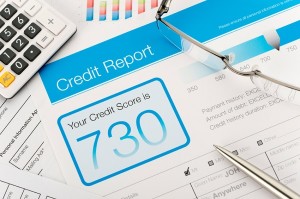 Today’s top story: How to buy your kid a good credit score. Also in the news: What keeps us awake at night, what low-income families lose by not having bank accounts, and finance lessons Baby Boomers could learn from Millennials.
Today’s top story: How to buy your kid a good credit score. Also in the news: What keeps us awake at night, what low-income families lose by not having bank accounts, and finance lessons Baby Boomers could learn from Millennials.
How to Buy Your Kid a Good Credit Score for $200
Starting them off on the right foot.
Money, Safety and Privacy Keep Us Awake at Night
What we worry about when we try to sleep.
Low-Income Families Are Most Likely to Skip the Bank Account — and Pay the Price
Losing interest and protection.
5 Finance Lessons Baby Boomers Could Learn From Millennials
Taking advice.
 Today’s top story: The high cost of being unbanked. Also in the news: What you need to ask when choosing a mortgage broker, how getting a car loan can affect your credit, and how your Facebook account can ruin your finances.
Today’s top story: The high cost of being unbanked. Also in the news: What you need to ask when choosing a mortgage broker, how getting a car loan can affect your credit, and how your Facebook account can ruin your finances.  Today’s top story: How to decide if you need travel insurance. Also in the news: Steps to take if you didn’t get enough financial aid, why not being in debt is better than having awesome credit, and 4 things you should know about health savings accounts.
Today’s top story: How to decide if you need travel insurance. Also in the news: Steps to take if you didn’t get enough financial aid, why not being in debt is better than having awesome credit, and 4 things you should know about health savings accounts.  Today’s top story: What to do when you’re denied a checking account. Also in the news: What a credit score of 600 means, using fantasy football strategies for your investment portfolio, and how to teach your kids to budget.
Today’s top story: What to do when you’re denied a checking account. Also in the news: What a credit score of 600 means, using fantasy football strategies for your investment portfolio, and how to teach your kids to budget. 
 Today’s top story: Why you shouldn’t wait for a 401(k) to start saving for retirement. Also in the news: Cell phone options for when you’re traveling overseas, credit problems that can destroy your home-buying dreams, and five crucial retirement years for your money.
Today’s top story: Why you shouldn’t wait for a 401(k) to start saving for retirement. Also in the news: Cell phone options for when you’re traveling overseas, credit problems that can destroy your home-buying dreams, and five crucial retirement years for your money. Today’s top story: The best credit card tips for May. Also in the news: Tips to weather the financial storm of a layoff, what the new FICO score means for you, and carryovers to remember when doing your 2016 tax planning.
Today’s top story: The best credit card tips for May. Also in the news: Tips to weather the financial storm of a layoff, what the new FICO score means for you, and carryovers to remember when doing your 2016 tax planning.